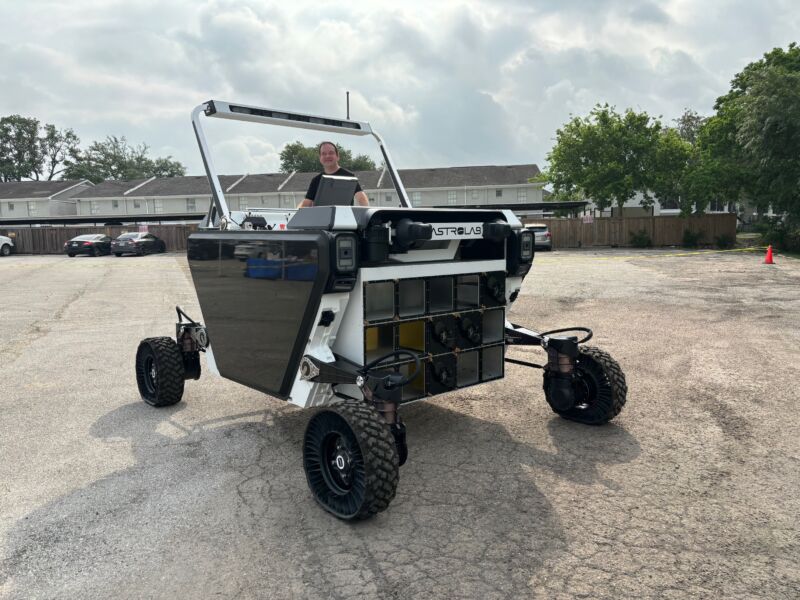
Eric Berger
As a SpaceX engineer working on the Starship program about five years ago, Jaret Matthews could see the future of spaceflight quite clearly and began to imagine the possibilities.
For decades everything that went to space had to be carefully measured, optimized for mass, and serve an extremely specialized purpose. But Starship, Matthews believed, held the potential to change all that. With full reusability, a barn-size payload fairing, and capability to loft 100 or more metric tons to orbit in a single throw, Starship offered the tantalizing prospect of a world in which flying into space was not crazy expensive. He envisioned Starships delivering truckloads of cargo to the Moon or Mars.
Matthews spent a decade working on robots and rovers at NASA’s Jet Propulsion Laboratory before coming to SpaceX in 2012. He began to suggest that the company work on a system that could unload and distribute cargo from Starship, like the cranes and trucks that offload cargo from large container ships in port. However, he didn’t get far, as SpaceX was focused on developing the Starship transportation system.
So he left SpaceX and founded a company to develop a cargo-carrying rover.
“It was thinking about the implications of Starship that prompted me to found Astrolab,” he said. “The premise was that, if we’re really going to go to Mars, the first thing we’re going to have to do is set up a bunch of equipment. I left SpaceX knowing the width of the Starship door, and we made the biggest thing that could pass through it.”
This turned out to be a prototype rover. Matthews related his history with SpaceX as we stood on top of a 3-meter-wide vehicle in an asphalt parking lot near Johnson Space Center in Houston. Standing about a meter off the ground, we had a commanding view, and soon he told me to grab the joystick. Off we went—backward and forward, sideways and at odd angles.
Shortly after Matthews let me drive around the parking lot in various modes, I had three immediate thoughts. It was a hell of a lot of fun to drive. For someone like me with limited piloting skills, it was remarkably intuitive to handle. And holy crap, can you imagine being an astronaut driving across the Moon in this?
Getting on board with NASA
Matthews can. He founded Astrolab in January 2020. It was terrible and terrific timing. The bad part was the onset of COVID-19 just weeks later. The good part was that, early that year, NASA released its first request for information about a “Lunar Terrain Vehicle” to support the activities of its Artemis astronauts on the surface of the Moon. In those first months, the company consisted of Matthews and the company’s chief engineer, Rius Billing, replying to that request.
But they did not just complete paperwork. Almost immediately Matthews and a small but growing team began building this full-size prototype rover. By the end of 2021 they invited noted Canadian astronaut Chris Hadfield, now on the company’s board of advisers, out to the desert to test-drive the vehicle while wearing a spacesuit.
